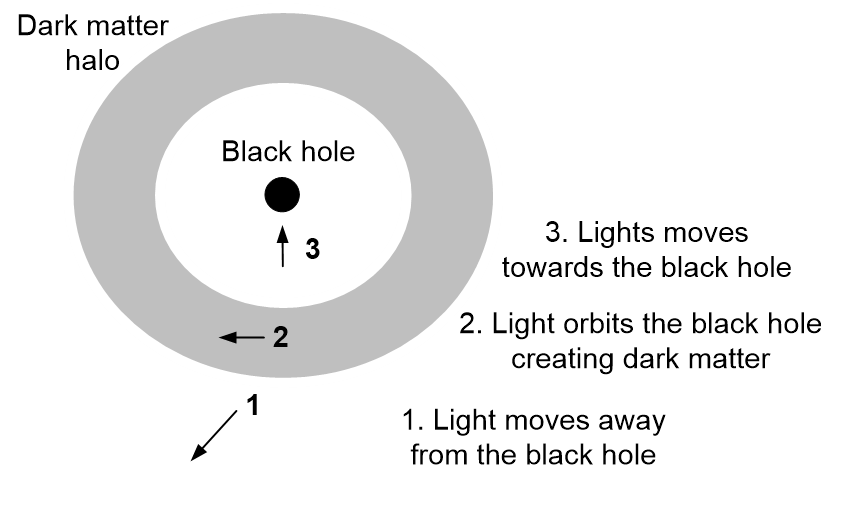Abbott, E. (1884). Flatland: a romance of many dimensions. Retrieved February 22, 2010, from http://www.gutenberg.org/etext/201
Ambjorn, J., Jurkiewicz, J., & Loll, R. (2008). The Self-Organizing Quantum Universe. Scientific American, 299 July (1), 24–31.
Baggot, J. (2013). Farewell to Reality: How fairytale physics betrays the search for scientific truth. London: Constable.
Barbour, J. (1999). The End of Time: The next revolution in physics. Oxford: Oxford University Press.
Barrow, J. D. (2007). New theories of everything. Oxford: Oxford University Press.
Bejan, A. (2023). The principle underlying all evolution, biological, geophysical, social and technological. Philosophical Transactions of the Royal Society, 381(2252). https://doi.org/10.1098/rsta.2022.0288
Burke, D. L., & et al. (1997). Positron Production in Multiphoton Light-by-Light Scattering. Phys. Rev. Lett., 79, 1626–1629.
CMS collaboration. (2012). A New Boson with a Mass of 125 GeV Observed with the CMS Experiment at the Large Hadron Collider. Science, 338(December, 6114), 1569–1575.
Comay, E. (2009). Physical Consequences of Mathematical Principles. Progress in Physics, 4(October), 91–98.
Conway, J., & Koch, S. (2006). The free will theorem. Found. Phys., 36(10), arXiv:quant-ph/0604079v1.
Cramer, J. (1986). The Transactional Interpretation of Quantum Mechanics. Reviews of Modern Physics, 58, 647–688.
Davies, P. (2006). The Goldilocks Enigma. Penguin Books.
Davies, P., & Brown, J. R. (1999). The Ghost in the Atom. Cambridge: Cambridge University Press.
Diamond, J. (2005). Collapse: How societies choose to fail or succeed. Viking (Penguin Group).
Dunning, B. (2008). Will the Large Hadron Collider Destroy the Earth? Skeptoid Podcast. Retrieved from http://skeptoid.com/episodes/4109
Ent, R., Ulrich, T., & Venugopalan, R. (2015). The glue that binds us. Scientific American, (May), 32–39.
Everett, H. (1957). “Relative state” formulation of quantum mechanics. Rev. of Mod. Phys., 29, 454–462.
Feng, J. L., Rajaraman, A., & Takayama, F. (2003). SuperWIMP dark matter signals from the early universe. ArXiv:Quant-Ph/9912088v1. Retrieved from http://www.nature.com/news/2003/030708/full/news030707-2.html
Feynman, R. P., R. B. Leighton, and M. Sands. The Feynman Lectures on Physics. Addison-Wesley, 1977.
Kuhn, T. (1970). The Structure of Scientific Revolutions (Vol. Second Edition, Enlarged). Chicago: The University of Chicago Press.
Lederman, L., & Teresi, D. (2012). The God Particle: If the Universe Is the Answer, What Is the Question?
Marburger, J. (2011). Constructing Reality. Cambridge University Press.
Margulis, L. (1999). Symbiotic Planet: A New Look At Evolution. Houston: Basic Book.
Oerter, R. (2006). The Theory of Almost Everything. London: Plume, Penguin.
Penrose, R. (2010). Cycles of Time. Vintage Books.
Pinker, S. (2002). The Blank Slate. New York, Penguin.
Richard Feynman. (1985). QED, The Strange Theory of Light and Matter. Princeton University Press.
Rosenthal, R., & Rosnow, R. L. (1991). Essentials of Behavioral Research; Methods and Data Analysis (Vol. Second). Boston: McGraw-Hill.
Shannon, C. E., & Weaver, W. (1949). The Mathematical Theory of Communication. Urbana: University of Illinois Press.
Smolin, L. (2006). The Trouble with Physics. New York: Houghton Mifflin Company.
van der Mark, M. B., & t’Hooft, G. W. (2011, May 22). Light is Heavy. Retrieved from http://www.tardyon.de/mirror/hooft/hooft.htm
Wheeler, J. A., & Feynman, R. P. (1945). Interaction with the Absorber as the Mechanism of Radiation. Reviews of Modern Physics, 17(2–3), 157–161.
Whitworth, B. (2009). A Comparison of Human and Computer Information Processing. In M. Pagani (Ed.), Encyclopedia of Multimedia Technology and Networking (p. 230–239). Hershey PA: Information Science Reference.
Whitworth, B., & Ahmad, A. (2013). The Social Design of Technical Systems: Building technologies for communities. The Interaction Design Foundation.
Wilczek, F. (2008). The Lightness of Being: Mass, Ether and the Unification of forces. New York: Basic Books.
Woit, P. (2007). Not even wrong. London: Vintage.
Wolff, M. (2001). Spin, the Origin of the Natural Laws, and the Binary Universe. Presented at the American Physical Society Meeting, Wash. DC.
Zizzi, P. (2003). Emergent Consciousness; From the Early Universe to Our Mind, arXiv: gr-qc/0007006. NeuroQuantology, 3, 295–311.
